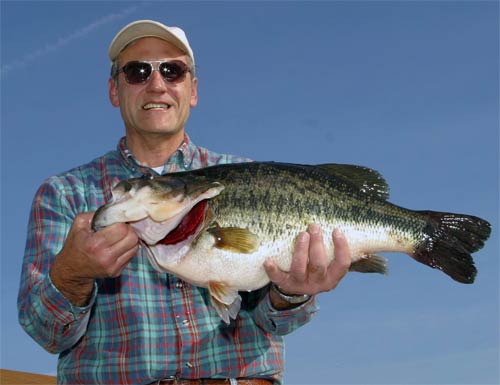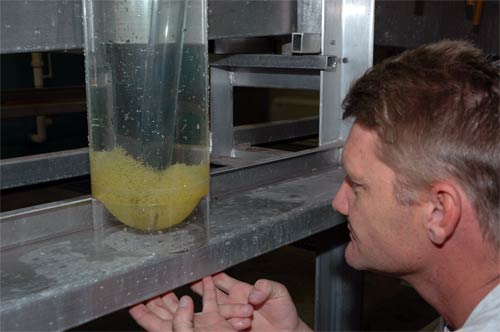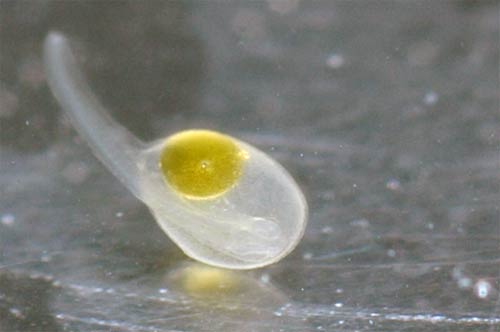TPWD Press Release
ATHENS, TexasŚAbout 11:00 a.m. March 31, a Budweiser ShareLunker set in motion a chain of events that could someday lead to a lunker bass on the end of your line.
Budweiser ShareLunker No. 353, caught by Frank Hardy from Lake Fork on January 14, 2004, spewed forth a monster spawn of 31,038 eggs.
Only 9 of the nearly 400 fish entered into the program to date have produced 30,000 or more eggs. Top producer was the Troy Johnson fish from Gibbons Creek Reservoir caught in 1988, which spawned an estimated 100,000 eggs over several years.
Ironically, HardyÆs fish was plagued by health problems over the last year. ōShe had a terrible fungal infection,ö said TFFC hatchery manager Jim Matthews. ōShe was as good as dead, but the staff treated her with salt baths, topical applications of hydrogen peroxide and formalin dips, and she pulled through.ö
She is a Hardy fish in more ways than one.
The big fish almost didnÆt make it to TFFC at all. Hardy did not have a ruler in his boat long enough to measure the fish when he caught her, and he almost threw her back, thinking she was too short to meet Lake ForkÆs 24-inch minimum. When measured, she was exactly 24 inches long.
The big bass released her eggs onto an Astroturf spawning mat as her male consort fertilized them. Hatchery staff rinsed the eggs from the mat and ran them through a machine called a Jensorter, which used a laser beam to count them.
Eggs are placed in McDonald jars for hatching. These tall cylinders have water circulated through them continuously. Once eggs hatch, they are moved into a small trough, where the hatchlings remain until they absorb their egg sac and are able to swim. At that point, about a week to ten days after being spawned, they are stocked into an outdoor pond that has been prepared for them.
In about 40 days, 1.5-inch fingerlings produced from this spawn will be stocked back into Lake Fork. In 8 to 10 years, one of them may well return to TFFC, a Budweiser ShareLunker in its own right.
Frank HardyÆs monster bass beat the odds to pass on its genes. TPWD scientists are able to use genetic fingerprinting to trace ShareLunker offspring back to their parents. If a descendant of HardyÆs fish ever finds its way to TFFC, it will be recognized for what it is. And another generation will begin.
Frank Hardy of Mineola caught this 13.32-pound largemouth bass from Lake Fork on January 14, 2004, starting the fish on an incredible journey.

Fisheries technician Shane Carter inspects the Hardy fishÆs spawn in a McDonald jar. The jar contains 31,038 eggs.

In two to five days, eggs hatch and tiny bass begin to form. ItÆs hard to believe, but this tiny hatchling, about the size of this letter e, could be a 13-pound bass in 8 to 10 years.

TPWD Photos and News by Larry D. Hodge

